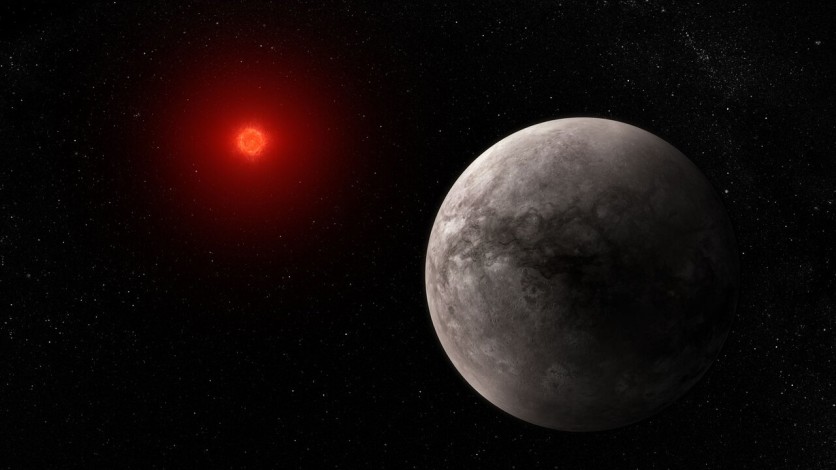In a groundbreaking discovery, a team of international researchers utilized the powerful James Webb Space Telescope to take the temperature of a distant rocky exoplanet called TRAPPIST-1 b.
This remarkable feat was made possible by the planet's thermal emission, which emits heat energy in the form of infrared light that was detected by Webb's Mid-Infrared Instrument (MIRI).
The results of this temperature measurement have given us new insights into the atmosphere and habitability of exoplanets.

Exoplanet Orbiting an Ultracool Red Dwarf Star
TRAPPIST-1 b is one of seven rocky planets orbiting an ultracool red dwarf star, located about 40 light-years away from Earth.
While the planets' sizes and masses are comparable to those of the inner planets in our solar system, they are much closer to their star and receive much more energy from it.
TRAPPIST-1 b, for example, orbits its star at a distance about one hundredth that of Earth's and receives four times the amount of energy Earth gets from the Sun.
While this planet is not within the habitable zone, it still holds significance in helping us better understand the possibility of life on exoplanets.
These findings mark a significant step forward in our understanding of whether planets orbiting small, active stars like TRAPPIST-1 can sustain atmospheres that are necessary for life. Furthermore, the results bode well for Webb's ability to characterize temperate, Earth-sized exoplanets using MIRI.
"These observations really take advantage of Webb's mid-infrared capability," Thomas Greene, an astrophysicist at NASA's Ames Research Center and lead author on the study, said in a press release statement. "No previous telescopes have had the sensitivity to measure such dim mid-infrared light."
Although earlier observations of TRAPPIST-1 b with the NASA/ESA Hubble Space Telescope and NASA's Spitzer Space Telescope found no evidence of a puffy atmosphere, this new measurement of the planet's temperature has helped to reduce the uncertainty around the planet's atmospheric composition.
Secondary Eclipse Photometry
By using a technique called secondary eclipse photometry, the team was able to measure the planet's dayside temperature, which turned out to be around 500 kelvins, roughly equivalent to a blazing hot 230°C. Interestingly, this temperature measurement also suggests that TRAPPIST-1 b does not have a significant atmosphere.
Webb's identification of a secondary eclipse is a noteworthy accomplishment in and of itself. The star is almost 1,000 times brighter than the planet, so the brightness difference is significantly small-less than 0.1%.
However, the team was able to precisely measure the amount of infrared light being emitted by the planet by reducing the brightness of the star alone (during the secondary eclipse) from the brightness of the star and planet combined.
Overall, this discovery has provided valuable insights into the habitability of exoplanets orbiting M-dwarf stars. By characterizing planets like TRAPPIST-1 b, we can better understand the conditions necessary for life to exist beyond our solar system.





